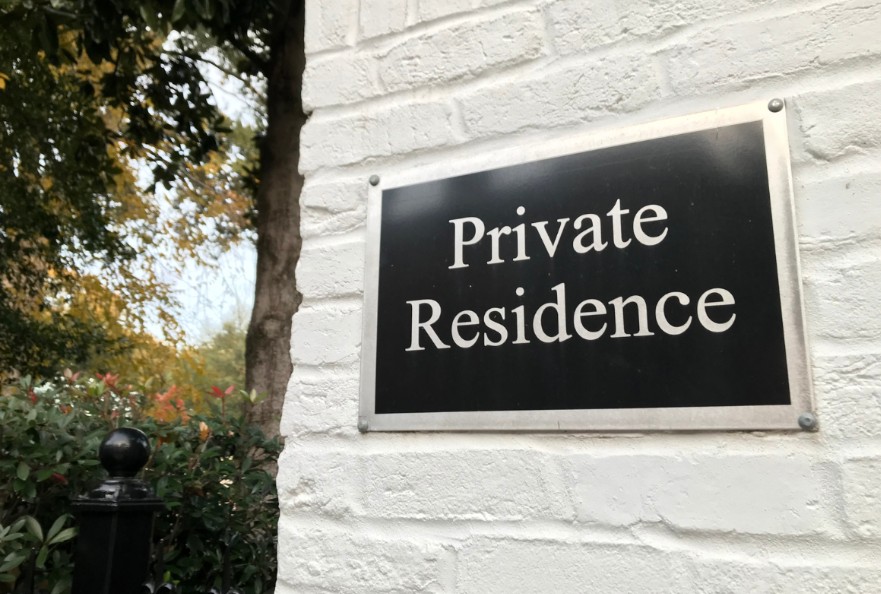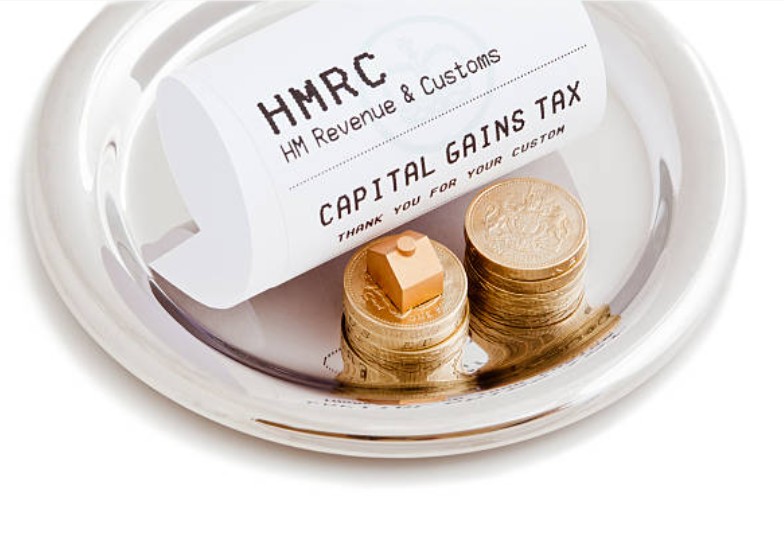When you sell a property in the UK, one of the most common concerns is: how long do you have to live in a property to avoid Capital Gains Tax UK? Whether it’s your family home, a holiday property, or a rental, understanding the rules around CGT and your main residence can help you avoid unexpected tax bills and plan your finances better.
This guide explains the key concepts of Capital Gains Tax, the important relief available for homeowners, and how the length and nature of your residency affect your tax liability. We’ll also explore practical examples and address common scenarios to ensure you have a clear understanding of your obligations and entitlements.
What Is Capital Gains Tax (CGT)?
Capital Gains Tax is a tax on the profit you make when you sell or dispose of an asset that has increased in value. The asset could be shares, valuable personal possessions, or, importantly, property. When it comes to property, CGT applies to homes that are not your main residence. This includes:
- Second homes or holiday homes
- Buy-to-let or rental properties
- Inherited properties you do not live in
- Land and other non-residential property
CGT does not apply to the sale of your primary residence, provided you meet certain conditions. This exemption exists to encourage homeownership and protect homeowners from taxes on their family homes. However, if you sell a property that is not your main home, or only part of the property qualifies, CGT may be payable on the gain you’ve made.
Understanding the distinction between your primary residence and other properties is crucial in managing your tax liabilities effectively.
What Is Private Residence Relief (PRR)?

Private Residence Relief is a valuable exemption that allows homeowners to avoid CGT on the gain made from selling their main or only home. This relief applies if the property was your main residence during the period you owned it.
PRR means you won’t pay tax on the increase in value for the time you lived in the home, plus an additional final 9 months of ownership, even if you moved out by then.
For example, if you owned a home for 10 years and lived there for 7 years, PRR would exempt the gain accrued during those 7 years, plus the last 9 months before selling. CGT would only apply to the remaining 2 years and 3 months when you didn’t live there.
This final 9-month exemption was introduced to help people who are in the process of moving out but have not yet sold their home, allowing some flexibility during life’s transition, such as job changes or property chains.
PRR is one of the most beneficial reliefs in UK tax law, saving many homeowners substantial sums when they sell their main home.
How Long Do You Have to Live in a Property to Avoid CGT?

One of the biggest misconceptions is that you need to live in a property for a fixed minimum period to qualify for PRR. There is no legal minimum time requirement.
HMRC doesn’t specify an exact number of months or years. Instead, they focus on whether the property was your actual main residence during the time you owned it.
What HMRC Looks For?
HMRC will assess if the property was genuinely your primary home by looking at factors such as:
- Whether your name is on the electoral register at the property address
- Whether you pay council tax on the property
- Utility bills like gas, electricity, and water are in your name
- Address on your driving licence and other official documents
- Where your children are registered for school
- Evidence of your social and community ties to the area
- Where do you spend the majority of your time
If these indicators show the property was your main base, your claim for PRR is more likely to succeed, even if you lived there for less than a year.
These factors provide tangible proof to HMRC that you genuinely occupied the property as your home. For example, if your bank statements and correspondence show the address, and your family is settled locally, this reinforces your claim.
This assessment is often holistic — HMRC may also consider evidence such as whether you receive mail there regularly, your membership of local clubs or organisations, and your ties to the local community.
Is Living for 12 Months a Good Rule of Thumb?
While there’s no statutory minimum time to live in the property, living there for at least 12 months is generally considered a strong benchmark by tax professionals. This period allows you to:
- Establish a genuine residence
- Update your official records consistently
- Demonstrate a settled lifestyle change rather than a short stay
Short stays of just a few months may not be enough unless you can prove that you genuinely intended the property as your main home.
It’s also important to note that HMRC looks beyond just the number of days. Intent is key — if you intended to live in the property as your main home and took reasonable steps to establish that, you may still qualify for relief.
For example, if you buy a home with the clear intention of making it your primary residence but move out shortly after due to unforeseen circumstances (like a job relocation or family emergency), you may still be eligible, especially if you continue to treat it as your home base.
Temporary Absences From Your Main Home
You don’t have to live in the property continuously to qualify for full PRR. HMRC allows some temporary absences while still treating the home as your main residence, such as:
- Working elsewhere temporarily (up to 36 months)
- Living abroad for work purposes
- Renovating the property before moving back in
- Moving into a care home or hospital temporarily
These absences are allowed as long as you lived in the property before and/or after the absence and it remained your main home.
This flexibility acknowledges that life circumstances often require people to be away from their main home temporarily. It’s essential, however, to keep records that demonstrate the temporary nature of your absence.
For example, if you go on a long-term work assignment abroad but maintain your home and return regularly, this may not affect your entitlement to PRR.
Renting Out Your Main Home: How Does This Affect CGT?

Many homeowners move out and rent their former main home before selling it. This situation impacts CGT as follows:
- You get full PRR for the period you lived there.
- You also get the final 9 months’ exemption, even if you moved out before selling.
- The period during which the property was rented out is subject to CGT.
Letting Relief
Before April 2020, many landlords benefited from Letting Relief, which reduced CGT on rented-out homes. However, this relief has been severely limited since then. Now, Letting Relief applies only if you live with the tenants.
This means many landlords no longer qualify for this relief and will pay CGT on the rental period unless they meet the strict criteria.
It’s vital to be aware of these changes, especially if you are considering renting out your home before selling, as this could have a significant tax impact.
If you let out a room in your home or live alongside your tenants, you might still qualify for some Letting Relief, but this is increasingly rare.
Example Scenario: Living Period and CGT Calculation
To illustrate, consider Sarah, who bought a flat for £200,000 in 2015 and lived there until 2019 (4 years). She rented it out from 2019 to 2023 and then sold it for £350,000.
- Total ownership: 8 years
- Period of residence: 4 years
- Rental period: 4 years
- The final 9 months are exempt automatically
Her gain is £150,000 (£350,000 – £200,000).
PRR exempts the gain for the 4 years she lived there, plus the final 9 months. Therefore:
- Exempt proportion = (4 years + 0.75 years) ÷ 8 years = 59.4%
- Exempt gain = £150,000 × 59.4% = £89,100
- Taxable gain = £150,000 – £89,100 = £60,900
Sarah can then apply her CGT annual allowance (£6,000 for 2023/24) and pay CGT on the remaining taxable gain.
This example clearly shows how the period you live in a property directly reduces the taxable gain and the amount of CGT payable.
Inherited Properties and CGT
When you inherit a property, you do not pay CGT immediately. Instead, the property’s value is ‘stepped up’ to the market value at the date of death. CGT is only due when you later sell the property, based on the increase in value since the inheritance.
If you move into the inherited home and make it your main residence, you can claim PRR for the period you live there, potentially reducing or eliminating CGT on sale.
This can be especially valuable when managing estates and planning for tax efficiency after inheritance.
For example, if you inherit a property worth £300,000 and later sell it for £350,000, CGT is only charged on the £50,000 gain, minus any PRR if you lived there.
How Much CGT Will You Pay Without PRR?
If you don’t qualify for PRR, CGT rates for residential property gains are:
- 18% for basic-rate taxpayers
- 28% for higher and additional-rate taxpayers
Every individual has an annual CGT allowance (£6,000 for 2023/24), meaning you only pay tax on gains above this amount.
It’s important to report and pay any CGT due on UK residential property within 60 days of the completion of the sale. Missing this deadline can lead to penalties and interest charges.
The 60-day deadline is relatively strict, so it’s wise to prepare early, especially if the sale involves complex ownership or relief claims.
Tips to Avoid CGT on Your Property
- Live in the property genuinely: Establish it as your main home for at least 12 months or more.
- Keep detailed records: Utility bills, council tax, electoral roll registration, and correspondence support your residency claim.
- Update official documents: Change your driving licence, GP registration, and bank statements to the property address.
- Plan rental periods carefully: Remember, CGT applies to the time when the property isn’t your main home.
- Consider joint ownership: Married couples can split gains and double CGT allowances.
- Seek professional advice: Complex situations like inheritance or buy-to-let conversions benefit from expert tax guidance.
Final Thoughts
There is no fixed minimum time you must live in a property to avoid Capital Gains Tax in the UK. The key is proving that the property was your main residence during ownership. While a year or more strengthens your case, HMRC focuses on the quality of your occupancy, not just the duration.
By understanding Private Residence Relief, keeping good records, and planning your property usage carefully, you can minimise or eliminate CGT when selling your home.
For more UK property tax updates and expert advice, keep following LocalBusinessNews.co.uk — your trusted resource for local business and financial news.

Leave a Reply